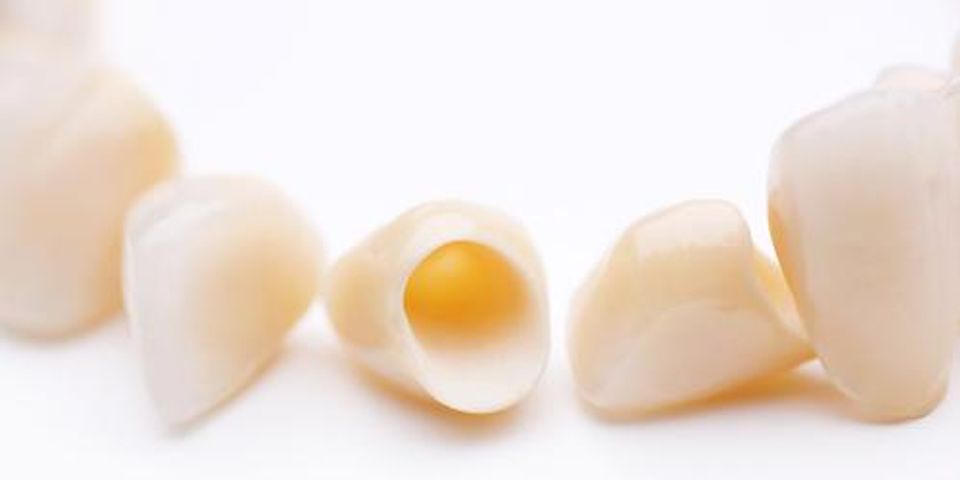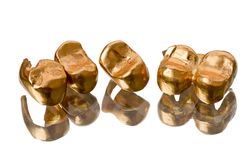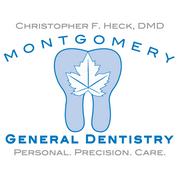3 Types of Dental Crowns Your Dentist Might Recommend

With the help of custom-designed dental crowns, your teeth can be just as strong, stable, and beautiful as they were before they endured damage or decay. However, many patients are surprised by the number of varieties available. Here are three types of dental crowns your Montgomery dentist might recommend and why.
Types of Dental Crowns
1. All-Porcelain Crowns
Because porcelain can be colored to match your existing teeth and the material itself is slightly translucent, all-porcelain dental crowns are typically recommended for the anterior, or visible, teeth. Technology invasion into dental materials has resulted in the development of all porcelain crowns that are not as abrasive to opposing natural teeth, do not require metal substructures, can be design and milled by a computer resulting in accurate fitting crowns that are more esthetic than older types of crowns. Talk with your Montgomery dentist whether an all-porcelain crown would work best for your damaged tooth.
2. Zirconia Crowns
Zirconia oxide based crowns are the newest and most commonly prescribed crowns for back teeth. Originally designed for patients that grind or clench, this tooth-colored metal is the strongest and most fracture resistant material we have in dentistry, yet is the most gentle to opposing teeth. Also designed and milled via computers, it isn’t as translucent as all-porcelain materials, but is up to 3-4 times stronger. Newer formulations are bridging the gap between strength and esthetics, yielding more translucent crowns than ever before. Improvements in staining zirconia has also made shade matching to natural teeth in the front of the mouth a possibility, especially where extra strength or grinding is an issue. This material can be used virtually anywhere in the mouth and is widely used by Dr. Heck.
3. Gold Crowns and Porcelain Fused to Metal Crowns
 Metal-based crowns are not as commonly prescribed by dentists with the wave of new materials and fabrication methods mentioned above. However, these crowns are still available. If you wanted a tooth colored crown from the 1970s to the mid-2000s, the most commonly prescribed crowns were porcelain fused to metal (PFM) crowns. Porcelain was veneered over a metal sub-structure or coping. While strong, these hand-layered crowns were extremely abrasive to opposing teeth, the porcelain could still chip or crack exposing the metal and often times were chalky or opaque in appearance due to need to block out the metal with the porcelain. When used in the front of the mouth, often the patient would have have dark lines develop at the gums due to the metal exposure. Thankfully with the advent of all-porcelain and zirconia crowns, these are no longer commonly prescribed. If you require replacement of an existing crown due to fracture or decay, rest assured these types of crowns are no longer prescribed by Dr. Heck.
Metal-based crowns are not as commonly prescribed by dentists with the wave of new materials and fabrication methods mentioned above. However, these crowns are still available. If you wanted a tooth colored crown from the 1970s to the mid-2000s, the most commonly prescribed crowns were porcelain fused to metal (PFM) crowns. Porcelain was veneered over a metal sub-structure or coping. While strong, these hand-layered crowns were extremely abrasive to opposing teeth, the porcelain could still chip or crack exposing the metal and often times were chalky or opaque in appearance due to need to block out the metal with the porcelain. When used in the front of the mouth, often the patient would have have dark lines develop at the gums due to the metal exposure. Thankfully with the advent of all-porcelain and zirconia crowns, these are no longer commonly prescribed. If you require replacement of an existing crown due to fracture or decay, rest assured these types of crowns are no longer prescribed by Dr. Heck.
Although porcelain crowns are recommended for the anterior teeth, they aren’t always the best option for teeth that endure a high level of biting force, which is why your dentist might recommend a gold crown. Gold alloy is durable, hypoallergenic, and slightly malleable, preventing chips and sharp edges. Although the cost of gold has increased significantly, these crowns are made of mixture of metals including gold, and can be a great alternative to all-porcelain crowns.
Do you think you need a dental crown? Whether you have been living with dental pain or are concerned about restoring the appearance of one of your teeth, Christopher F. Heck, DMD – Montgomery General Dentistry can answer your questions about dental crowns. With years of experience and a commitment to superior patient care, this family-oriented dentist will help you decide on the appropriate treatment plan for your budget, timeline, and aesthetic goals. To learn more about his practice, visit him online or call (513) 794-1884.
About the Business
Have a question? Ask the experts!
Send your question

